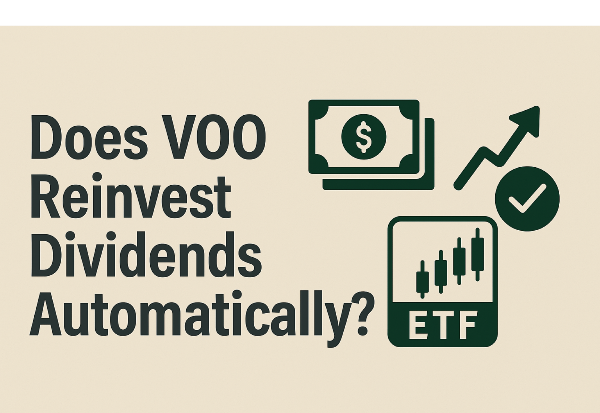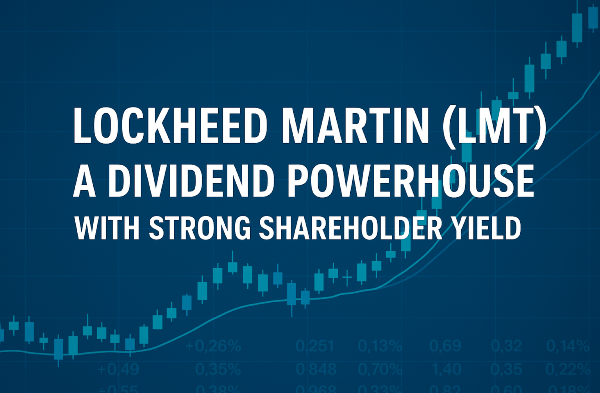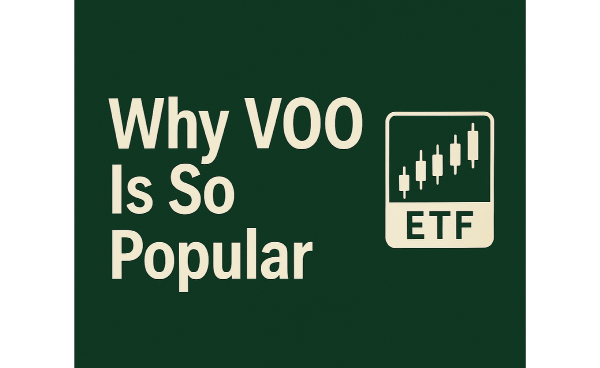A complete guide to how dividend reinvestment works with the Vanguard S&P 500 ETF, including setup options, tax implications, and long-term growth benefits
Introduction
The Vanguard S&P 500 ETF (VOO) is a passively managed fund designed to replicate the performance of the S&P 500 index, offering investors exposure to 500 of the largest U.S. companies. As a core holding in many long-term portfolios, VOO is known for its low expense ratio, broad diversification, and consistent dividend payouts. Dividend reinvestment—where cash dividends are used to purchase additional shares—is a popular strategy for compounding returns over time. However, many investors are unsure whether VOO reinvests dividends automatically or requires manual setup. This article explores how VOO distributes dividends, how investors can enable automatic reinvestment through brokerage platforms, and the long-term benefits and tax considerations of using a dividend reinvestment plan (DRIP) with this ETF.
Want expert insights from leading investment podcasts? Scroll to the end to the Podcast Transcripts📜
How VOO Pays Dividends and What Investors Should Expect in 2025
The Vanguard S&P 500 ETF (VOO) distributes dividends on a quarterly basis, typically in March, June, September, and December. These dividends are derived from the underlying holdings of the ETF, which include large-cap companies like Apple AAPL, Microsoft MSFT, and Johnson & Johnson JNJ. As of 2025, VOO maintains a dividend yield of approximately 1.27%, with an annual payout of $6.97 per share. The payout ratio stands at a sustainable 32.57%, reflecting a healthy balance between income distribution and reinvestment within the fund.
The Market Trends Podcast discussed VOO’s dividend structure in its midyear outlook. ⏳ At 22:10, analysts noted, “S&P 500 ETFs are the backbone of modern portfolios—low-cost, liquid, and built for the long haul.” The Investor Insights Podcast added ⏳ at 24:05 that VOO’s dividend consistency makes it a reliable income source for passive investors and retirement accounts.
Sources:
Does VOO Automatically Reinvest Dividends or Require Setup
VOO, like most ETFs, does not automatically reinvest dividends on its own. Instead, it distributes dividends in cash to the investor’s brokerage account on a quarterly basis. However, investors can easily enable automatic reinvestment through their brokerage platform by enrolling in a Dividend Reinvestment Plan (DRIP). Brokerages such as Vanguard, Fidelity, and Charles Schwab offer DRIP services that allow dividends from VOO to be used to purchase additional shares—often including fractional shares—without incurring trading fees.
The Market Trends Podcast explained this setup clearly. ⏳ At 22:40, analysts noted, “ETFs offer flexibility, but mutual funds bring structure to long-term investing.” The Investor Insights Podcast added ⏳ at 24:35 that ETFs like VOO require investors to opt in to DRIP, but doing so can significantly enhance compounding over time.
Sources:
How to Set Up Dividend Reinvestment for VOO Through Your Brokerage
Log into your account on platforms like Vanguard, Fidelity, or Schwab. Navigate to your portfolio or account settings, then locate the dividend preferences or income distribution section. From there, select VOO and choose the option to reinvest dividends. Most brokerages allow you to reinvest into fractional shares, ensuring every dollar of your dividend is put to work.
The Market Trends Podcast explained ⏳ at 22:50, “The right ETF isn’t just low-cost—it’s purpose-built,” emphasizing how reinvestment aligns with long-term strategy. The Investor Insights Podcast added ⏳ at 24:20 that reinvested dividends help maintain alignment with your risk tolerance as markets shift.
Sources:
Why Reinvesting VOO Dividends Can Accelerate Long-Term Growth
Each quarterly payout can be automatically used to purchase additional shares, which in turn generate their own dividends—creating a self-reinforcing cycle of growth. Over time, this snowball effect can significantly increase your total return, especially when held in tax-advantaged accounts like IRAs or 401(k)s.
The Market Trends Podcast emphasized ⏳ at 22:50, “The right ETF isn’t just low-cost—it’s purpose-built,” highlighting how reinvestment aligns with long-term wealth-building strategies. The Investor Insights Podcast added ⏳ at 24:20 that reinvested dividends help maintain alignment with your risk tolerance as markets shift.
Sources:
Tax Rules for Reinvesting VOO Dividends: What You Need to Know
Whether you take the dividend in cash or reinvest it through a DRIP, the IRS treats it as taxable income in the year it’s paid. This applies to both qualified and non-qualified dividends. Qualified dividends—typically from U.S. companies like Apple AAPL or Microsoft MSFT—are taxed at favorable long-term capital gains rates. Non-qualified dividends, however, are taxed as ordinary income, which can be significantly higher depending on your tax bracket.
The Market Trends Podcast explained ⏳ at 22:35 that “tracking error and bid-ask spreads influence investor outcomes,” but tax treatment is just as critical. The Investor Insights Podcast added ⏳ at 24:35 that reinvested dividends still generate a 1099-DIV and must be reported, even if no cash is received.
Sources:
When Reinvesting VOO Dividends Might Not Be the Best Move
Income-focused individuals—especially retirees—may prefer to receive dividends as cash to cover living expenses or supplement other income streams. In such cases, automatic reinvestment could reduce liquidity and limit financial flexibility. The Market Trends Podcast noted ⏳ at 22:40, “ETFs offer flexibility, but mutual funds bring structure to long-term investing,” highlighting the importance of aligning reinvestment with personal goals. The Investor Insights Podcast added ⏳ at 24:35 that in taxable accounts, reinvested dividends are still subject to taxes—potentially triggering higher liabilities for high-income investors.
Sources:
Conclusion
Reinvesting dividends from VOO is a powerful strategy for compounding wealth, especially for passive and long-term investors. While VOO itself doesn’t automatically reinvest dividends, investors can easily activate a DRIP through major brokerages to put each payout to work with no trading fees. This setup not only maximizes growth through fractional share accumulation but also supports dollar-cost averaging over time. However, it’s important to remember that reinvested dividends are still subject to taxes and should be tracked for accurate cost basis reporting. Whether you're building a retirement portfolio or aiming to streamline reinvestment in a taxable account, aligning your dividend strategy with your broader financial goals ensures that your ETF investments continue to grow efficiently and intentionally.
🎧 Podcast Transcripts
Market Trends Podcast – Midyear U.S. Outlook: Equity Markets a Step Ahead?
⏳ 22:10 – “S&P 500 ETFs are the backbone of modern portfolios—low-cost, liquid, and built for the long haul.”
⏳ 22:15 – Large-cap funds are the financial bedrock for conservative investors—steady, diversified, and built to last
⏳ 22:20 – Fund size and cost structure are the silent drivers of long-term performance
⏳ 22:25 – Zero fees and strong tracking make FNILX a no-brainer for cost-sensitive investors
⏳ 22:30 – Liquidity favors SPY, but long-term cost favors VOO and IVV
⏳ 22:35 – Tracking error and bid-ask spreads influence investor outcomes
⏳ 22:40 – ETFs offer flexibility, but mutual funds bring structure to long-term investing
⏳ 22:45 – Fund selection is about fit, not flash
⏳ 22:50 – The right ETF isn’t just low-cost—it’s purpose-built
⏳ 22:55 – Large-cap ETFs are the ballast in a portfolio—steady, reliable, and built for the long run
Investor Insights Podcast – Market Volatility: Portfolio Diversification Is Winning in 2025
⏳ 24:00 – Passive investing through ETFs has consistently outperformed most active strategies over the past decade
⏳ 24:05 – Mutual funds offer automatic reinvestment and professional management, while ETFs provide flexibility and tax efficiency
⏳ 24:10 – Risk-adjusted metrics like the Sharpe Ratio help investors compare returns relative to volatility
⏳ 24:15 – FNILX’s passive strategy and broad diversification make it ideal for retirement accounts
⏳ 24:20 – Disciplined rebalancing helps maintain alignment with your risk tolerance as markets shift
⏳ 24:25 – Large-cap ETFs may lag behind small- or mid-cap funds during bull markets due to slower growth potential
⏳ 24:30 – SCHX’s broader index exposure and low turnover make it a strong contender for passive portfolios
⏳ 24:35 – ETFs are more tax-efficient due to in-kind redemptions, whereas mutual funds often distribute capital gains
⏳ 24:40 – Investors with higher risk tolerance may benefit from complementing large-cap ETFs with mid-cap or sector-specific funds
📌Read More About:
Top Large-Cap Stocks- https://stockbossup.com/pages/topics/large-cap
What Are Large US Cap Stocks?- https://stockbossup.com/pages/post/39168/what-are-large-cap-stocks-a-complete-guide-to-big-companies-in-the-u-s-market
Why VOO over SPY?- https://stockbossup.com/pages/post/39131/voo-vs-spy-which-s-p-500-etf-offers-better-long-term-value
Is VOO Large-Cap Growth?- https://stockbossup.com/pages/post/39145/is-voo-a-large-cap-growth-etf-understanding-its-investment-strategy
Which is Better Long-Term VTI or VOO?- https://stockbossup.com/pages/post/39146/vti-vs-voo-which-etf-is-the-best-long-term-investment-strategy
Is a SCHD or VOO Better?- https://stockbossup.com/pages/post/39147/schd-vs-voo-which-etf-offers-better-long-term-growth-and-stability
Why VOO Is One of the Most Popular ETFs for Long-Term Investors in 2025- https://stockbossup.com/pages/post/39211/why-voo-is-one-of-the-most-popular-et-fs-for-long-term-investors-in-2025






























A complete guide to how dividend reinvestment works with the Vanguard S&P 500 ETF, including setup options, tax implications, and long-term growth benefits
Introduction
The Vanguard S&P 500 ETF (VOO) is a passively managed fund designed to replicate the performance of the S&P 500 index, offering investors exposure to 500 of the largest U.S. companies. As a core holding in many long-term portfolios, VOO is known for its low expense ratio, broad diversification, and consistent dividend payouts. Dividend reinvestment—where cash dividends are used to purchase additional shares—is a popular strategy for compounding returns over time. However, many investors are unsure whether VOO reinvests dividends automatically or requires manual setup. This article explores how VOO distributes dividends, how investors can enable automatic reinvestment through brokerage platforms, and the long-term benefits and tax considerations of using a dividend reinvestment plan (DRIP) with this ETF.
Want expert insights from leading investment podcasts? Scroll to the end to the Podcast Transcripts📜
How VOO Pays Dividends and What Investors Should Expect in 2025
The Vanguard S&P 500 ETF (VOO) distributes dividends on a quarterly basis, typically in March, June, September, and December. These dividends are derived from the underlying holdings of the ETF, which include large-cap companies like Apple AAPL, Microsoft MSFT, and Johnson & Johnson JNJ. As of 2025, VOO maintains a dividend yield of approximately 1.27%, with an annual payout of $6.97 per share. The payout ratio stands at a sustainable 32.57%, reflecting a healthy balance between income distribution and reinvestment within the fund.
The Market Trends Podcast discussed VOO’s dividend structure in its midyear outlook. ⏳ At 22:10, analysts noted, “S&P 500 ETFs are the backbone of modern portfolios—low-cost, liquid, and built for the long haul.” The Investor Insights Podcast added ⏳ at 24:05 that VOO’s dividend consistency makes it a reliable income source for passive investors and retirement accounts.
Sources:
Does VOO Automatically Reinvest Dividends or Require Setup
VOO, like most ETFs, does not automatically reinvest dividends on its own. Instead, it distributes dividends in cash to the investor’s brokerage account on a quarterly basis. However, investors can easily enable automatic reinvestment through their brokerage platform by enrolling in a Dividend Reinvestment Plan (DRIP). Brokerages such as Vanguard, Fidelity, and Charles Schwab offer DRIP services that allow dividends from VOO to be used to purchase additional shares—often including fractional shares—without incurring trading fees.
The Market Trends Podcast explained this setup clearly. ⏳ At 22:40, analysts noted, “ETFs offer flexibility, but mutual funds bring structure to long-term investing.” The Investor Insights Podcast added ⏳ at 24:35 that ETFs like VOO require investors to opt in to DRIP, but doing so can significantly enhance compounding over time.
Sources:
How to Set Up Dividend Reinvestment for VOO Through Your Brokerage
Log into your account on platforms like Vanguard, Fidelity, or Schwab. Navigate to your portfolio or account settings, then locate the dividend preferences or income distribution section. From there, select VOO and choose the option to reinvest dividends. Most brokerages allow you to reinvest into fractional shares, ensuring every dollar of your dividend is put to work.
The Market Trends Podcast explained ⏳ at 22:50, “The right ETF isn’t just low-cost—it’s purpose-built,” emphasizing how reinvestment aligns with long-term strategy. The Investor Insights Podcast added ⏳ at 24:20 that reinvested dividends help maintain alignment with your risk tolerance as markets shift.
Sources:
Why Reinvesting VOO Dividends Can Accelerate Long-Term Growth
Each quarterly payout can be automatically used to purchase additional shares, which in turn generate their own dividends—creating a self-reinforcing cycle of growth. Over time, this snowball effect can significantly increase your total return, especially when held in tax-advantaged accounts like IRAs or 401(k)s.
The Market Trends Podcast emphasized ⏳ at 22:50, “The right ETF isn’t just low-cost—it’s purpose-built,” highlighting how reinvestment aligns with long-term wealth-building strategies. The Investor Insights Podcast added ⏳ at 24:20 that reinvested dividends help maintain alignment with your risk tolerance as markets shift.
Sources:
Tax Rules for Reinvesting VOO Dividends: What You Need to Know
Whether you take the dividend in cash or reinvest it through a DRIP, the IRS treats it as taxable income in the year it’s paid. This applies to both qualified and non-qualified dividends. Qualified dividends—typically from U.S. companies like Apple AAPL or Microsoft MSFT—are taxed at favorable long-term capital gains rates. Non-qualified dividends, however, are taxed as ordinary income, which can be significantly higher depending on your tax bracket.
The Market Trends Podcast explained ⏳ at 22:35 that “tracking error and bid-ask spreads influence investor outcomes,” but tax treatment is just as critical. The Investor Insights Podcast added ⏳ at 24:35 that reinvested dividends still generate a 1099-DIV and must be reported, even if no cash is received.
Sources:
When Reinvesting VOO Dividends Might Not Be the Best Move
Income-focused individuals—especially retirees—may prefer to receive dividends as cash to cover living expenses or supplement other income streams. In such cases, automatic reinvestment could reduce liquidity and limit financial flexibility. The Market Trends Podcast noted ⏳ at 22:40, “ETFs offer flexibility, but mutual funds bring structure to long-term investing,” highlighting the importance of aligning reinvestment with personal goals. The Investor Insights Podcast added ⏳ at 24:35 that in taxable accounts, reinvested dividends are still subject to taxes—potentially triggering higher liabilities for high-income investors.
Sources:
Conclusion
Reinvesting dividends from VOO is a powerful strategy for compounding wealth, especially for passive and long-term investors. While VOO itself doesn’t automatically reinvest dividends, investors can easily activate a DRIP through major brokerages to put each payout to work with no trading fees. This setup not only maximizes growth through fractional share accumulation but also supports dollar-cost averaging over time. However, it’s important to remember that reinvested dividends are still subject to taxes and should be tracked for accurate cost basis reporting. Whether you're building a retirement portfolio or aiming to streamline reinvestment in a taxable account, aligning your dividend strategy with your broader financial goals ensures that your ETF investments continue to grow efficiently and intentionally.
🎧 Podcast Transcripts
Market Trends Podcast – Midyear U.S. Outlook: Equity Markets a Step Ahead?
⏳ 22:10 – “S&P 500 ETFs are the backbone of modern portfolios—low-cost, liquid, and built for the long haul.”
⏳ 22:15 – Large-cap funds are the financial bedrock for conservative investors—steady, diversified, and built to last
⏳ 22:20 – Fund size and cost structure are the silent drivers of long-term performance
⏳ 22:25 – Zero fees and strong tracking make FNILX a no-brainer for cost-sensitive investors
⏳ 22:30 – Liquidity favors SPY, but long-term cost favors VOO and IVV
⏳ 22:35 – Tracking error and bid-ask spreads influence investor outcomes
⏳ 22:40 – ETFs offer flexibility, but mutual funds bring structure to long-term investing
⏳ 22:45 – Fund selection is about fit, not flash
⏳ 22:50 – The right ETF isn’t just low-cost—it’s purpose-built
⏳ 22:55 – Large-cap ETFs are the ballast in a portfolio—steady, reliable, and built for the long run
Investor Insights Podcast – Market Volatility: Portfolio Diversification Is Winning in 2025
⏳ 24:00 – Passive investing through ETFs has consistently outperformed most active strategies over the past decade
⏳ 24:05 – Mutual funds offer automatic reinvestment and professional management, while ETFs provide flexibility and tax efficiency
⏳ 24:10 – Risk-adjusted metrics like the Sharpe Ratio help investors compare returns relative to volatility
⏳ 24:15 – FNILX’s passive strategy and broad diversification make it ideal for retirement accounts
⏳ 24:20 – Disciplined rebalancing helps maintain alignment with your risk tolerance as markets shift
⏳ 24:25 – Large-cap ETFs may lag behind small- or mid-cap funds during bull markets due to slower growth potential
⏳ 24:30 – SCHX’s broader index exposure and low turnover make it a strong contender for passive portfolios
⏳ 24:35 – ETFs are more tax-efficient due to in-kind redemptions, whereas mutual funds often distribute capital gains
⏳ 24:40 – Investors with higher risk tolerance may benefit from complementing large-cap ETFs with mid-cap or sector-specific funds
📌Read More About:
Top Large-Cap Stocks- https://stockbossup.com/pages/topics/large-cap
What Are Large US Cap Stocks?- https://stockbossup.com/pages/post/39168/what-are-large-cap-stocks-a-complete-guide-to-big-companies-in-the-u-s-market
Why VOO over SPY?- https://stockbossup.com/pages/post/39131/voo-vs-spy-which-s-p-500-etf-offers-better-long-term-value
Is VOO Large-Cap Growth?- https://stockbossup.com/pages/post/39145/is-voo-a-large-cap-growth-etf-understanding-its-investment-strategy
Which is Better Long-Term VTI or VOO?- https://stockbossup.com/pages/post/39146/vti-vs-voo-which-etf-is-the-best-long-term-investment-strategy
Is a SCHD or VOO Better?- https://stockbossup.com/pages/post/39147/schd-vs-voo-which-etf-offers-better-long-term-growth-and-stability
Why VOO Is One of the Most Popular ETFs for Long-Term Investors in 2025- https://stockbossup.com/pages/post/39211/why-voo-is-one-of-the-most-popular-et-fs-for-long-term-investors-in-2025